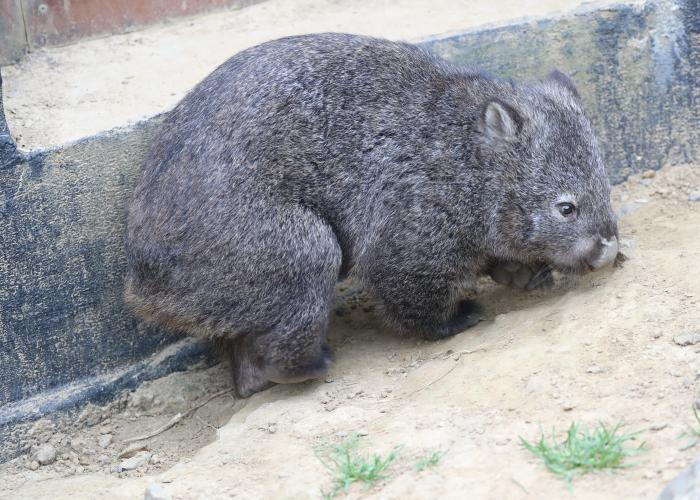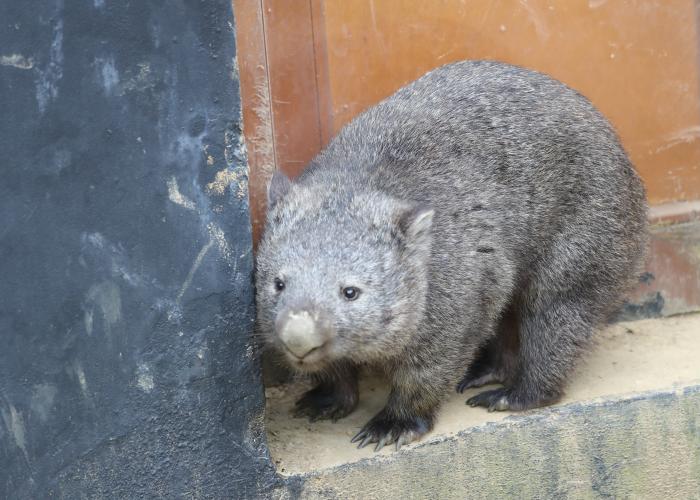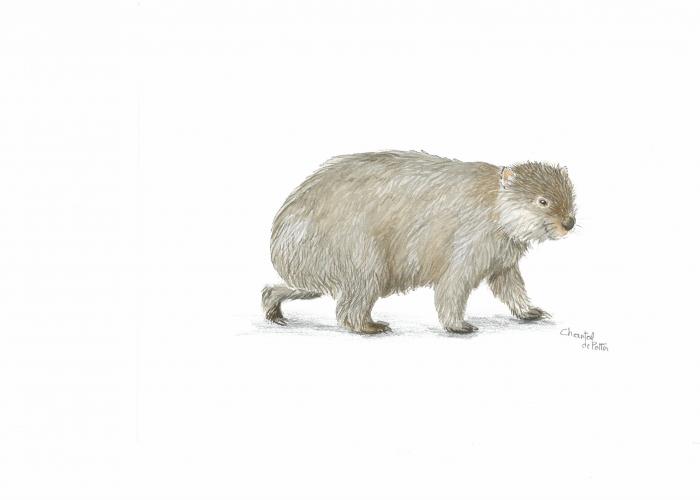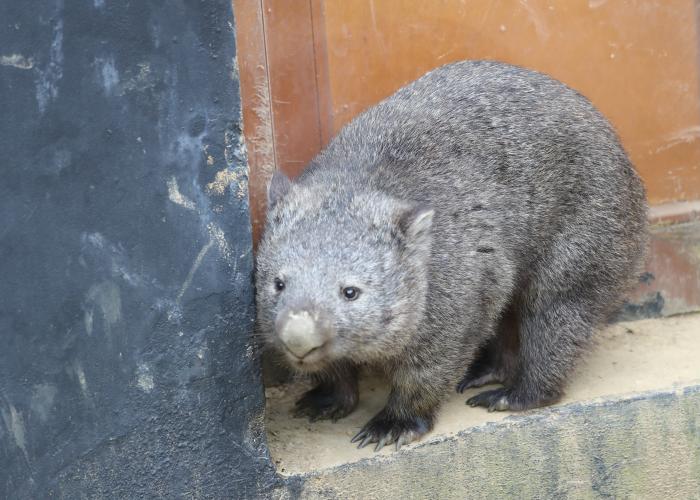A large mammal that digs burrows
This marsupial is the largest mammal in the world that digs burrows: it is on average 1 m long and weighs more than 25 kg. There are three subspecies of them: the one presented here, in Pairi Daiza, is endemic to the island of Tasmania, to the south of Australia. With its thick fur, varying from light brown to black, the Common Wombat resembles a bear cub, with little black eyes, little ears and a big nose.
This is a herbivore which eats only grass, roots, fruit and bark. It lives on moors and shrublands where it can dig, thanks to its powerful claws, very large burrows: up to 20 metres long! It usually spends most of the day in it, and comes out at night in order to feed.
As with other marsupials, the baby is born after a month of gestation and finishes its growth in its mother’s pouch. After six months, it starts to discover the world but still remains close to its mother for eighteen months. The species is not in danger although subject to certain dangers: poisoning, road accidents, predation by dogs and raptors…
Identity Card
- Name : Wombat
- Latin Name : Vombatus ursinus
- Origin : Tasmania
- IUCN Status : Préoccupation mineure
- Cites : Appendice I







